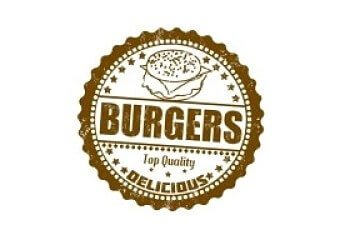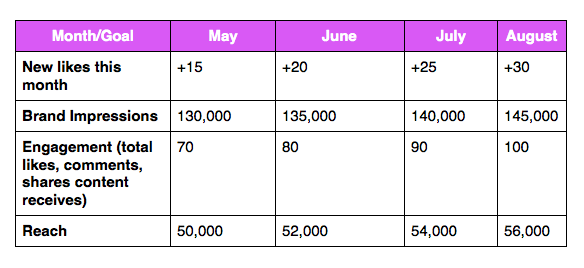
Social media has been a buzzword since the early 2000s, and now that brands have invested in sustaining a presence on platforms such as Twitter, Facebook, Instagram, and more, marketing executives and CEOs are eager to see the ROI (return on investment).
A look at the rise in discussion surrounding social media from Google’s Ngram viewer
The ROI question is tricky because “return” depends on what you’re measuring, and—unlike some other forms of media and marketing—there’s a LOT than can be measured with social media. Reporting softwares (which are increasingly sophisticated and affordable) can provide the most modest business with access to insights such as:
- growth metrics (i.e. how many new fans and followers)
- reach metrics (i.e. how many people were exposed to your content)
- engagement metrics (i.e. how people reacted to your content—which is different on each platform. This could be a ‘heart’ on Instagram, a retweet on Twitter, or a like, comment, or share on Facebook )
- demographic metrics (i.e. who is your audience on social media—where are they from? How old are they?)
and, with access to your website’s Google Analytics data, you can also track:
- traffic metrics (i.e. how many people came to your website from social media)
- sales metrics—if you’re site includes an e-commerce component (i.e. how many social interactions led to purchases/donations on your website?)
Above: A sample social media data set.
Data shows that social media isn’t a vague, undefinable activity for businesses, but instead a measurable and important part of your communications strategy. The return can be tracked—but what return are you looking for? It all comes down to having a why: why is your business on social media in the first place? What do you want out of it?
Social Media Goals are Business Goals
No matter your type of business, your social media goals should be in line with your business goals—and like your business goals, you should have a plan so that you can benchmark your efforts, track progress, and make better business decisions as a result.
Let’s look at a simple example that will help illustrate the importance of defining the “return” you’re seeking. While your business, organization, or nonprofit may look very different than the example below, the takeaways are applicable across the board.
Title image & burger image from Wendy on Flickr, available: http://bit.ly/1rVRhhZ
Sasha is an entrepreneur who owns and operates a boutique burger joint on Queen Street West in Toronto. Although Sasha doesn’t sell anything directly online, she started a Facebook page to make her business more searchable and get the word out about her gourmet grilling skills. For years, she has been posting photos of delicious burgers on Facebook, sharing status updates about satiating new menu items, and even announcing special deals on certain days of the week.
Goal-Setting & Defining Your Return: 3 Steps for Success
Start with a conversation about goal-setting and define the desired return. We know the investment Sasha is putting in—the time and energy spent posting and engaging on the platform—but what return is she seeking?
Obviously, as an entrepreneur, Sasha wants the same things as every business: increased sales. But remember that she’s not selling anything directly on Facebook—so while her overall goal may be monetary, whether or not she’s succeeding can’t be measured in dollars and cents. Her social media objectives need to be outlined in ways that can speak to her sales data later on down the line.
Since Sasha isn’t selling anything online, Facebook is a way of keeping her brand top-of-mind and rallying a community around her business. In this situation—as in most scenarios when you’re not selling anything online—social media is a engagement exercise more so than a transactional sales exercise.
Along this new line of thinking, a revised social media goal for Sasha could be to increase the reach of her content and cumulate more brand impressions and engagement. She could then leverage a social media software to help benchmark this data set. Here’s what that might look like:
 Just by mapping out data from previous months, Sasha can see which months were successful for her and which ones were quieter. She now has access to a wealth of information that can be analyzed and acted on.
Just by mapping out data from previous months, Sasha can see which months were successful for her and which ones were quieter. She now has access to a wealth of information that can be analyzed and acted on.
1. Analyze the Data
The first step would be to look closely at the successes of previous months. In Sasha’s data set, it seems the month of March was particularly successful in terms of brand awareness compared to other months. Take a deeper look at the individual pieces of content shared in March to understand what contributed to this spike. Then plan similar pieces of content for upcoming months.
As mentioned, tying social media goals to business goals is imperative, so the next step for Sasha would be to put the above data next to her sales data. Did the month of March also see an increase in sales? What about the following month?
2. Set Some Goals
Next, set some goals. By laying out the data from pervious months, you’ll have an idea of what a good month looks like and what an average month looks like in terms of reach, engagement, impressions and likes. From there, it should be a lot easier to set reasonable goals for yourself that are just a little bit higher than median performance levels and increase steadily over time. This is what reasonable goals might look like using the data set above:
Now that reasonable and measurable goals have been set, you can make an action plan for success. You know that for the month of May you want 15 new likes and 130,000 brand impressions, but how are you going to achieve this?
How to Get More Likes on Facebook
While any seasoned marketer will tell you likes don’t matter, every business owner likes likes. A new like is one more person who cares about your brand and has opted in to communicating with you.
My best advice to get more likes is to ask for them. Invite your contacts to like your page. If you’ve exhausted your friend list on Facebook, tell your customers about your page verbally. To go back to our burger shop example, it would be easy for the shop owner to incorporate mentioning the Facebook page into the cashier’s service script. If you have a brick and mortar shop, is there a “Find us on Facebook” sticker anywhere? Remember that in addition to using Facebook to attract new audiences, you also want to use it to stay in touch with existing customers—not only will it keep your brand top-of-mind, it also gives you potential access to their network and extended network (hence “social” media).
How to Get More Brand Impressions
Post more and post better. If you’re only posting to Facebook once or twice a week, an easy way to increase the number of impressions you’re leaving on this platform is to post more often. An even more effective way is to post better (i.e. more likable and sharable) content. While I’m not going to get into what makes a post better (that’s for a whole other article) for now just use this rule of thumb: would you share it?
Remember that people come to the social network to do just that—to socialize. They’re not there to buy into your marketing or support your business. That said, there’s a way of creating content that’s native to a platform so it feels less like marketing and more like storytelling.
How to Increase Reach
Reach and brand impressions go hand-in-hand, so the more reach your content has the more impressions it will leave. (The difference between reach and impressions is that reach is the number of people who see your content whereas impressions is the number of times your content is seen. So one user can generate multiple impressions).
On Facebook, you can pay for the platform to show your content to more people, hence increasing your overall reach. This is known as “boosting” your posts, and it requires that you buy into Facebook’s pay-to-play model. The good news is that it doesn’t have to be expensive: posts that are “boosted” for $5 can reach thousands.
How to get more Engagement
Once again, ask for it. I know it seems obvious, but something as simple as asking people to comment on your content can go a long way. If you’re offering a product (like in our burger shop example) you could gamify your content by asking fans to “like” for the chance to win a free side of fries with their next meal. Asking people to engage with your brand page is the equivalent of a call to action on your website.
How to Increase Sales
While the burger shop example mentioned wasn’t selling anything on Facebook directly, Sasha could develop an offer or promotion that links likes and engagement to sales in a more tangible way. For example, softwares such as Shortstack and Woobox will let you develop downloadable coupons that can be redeemed in store. The coupon would only be available to those who have first “liked” your page.
Another idea for linking Facebook efforts to real-world sales would be to offer a small secret menu or individual item that you only promote through Facebook. If people order from the secret menu, then you know they’ve seen your Facebook page and that your efforts are working.
Beyond the Burger Shop
While not all of us have brick-and-mortar stores, the example of the burger shop can be applied to many businesses and organizations, even nonprofits must realize conversions.
Beyond this, ask yourself: what’s the most meaningful way people can interact with my brand? Your answer could be as simple as “for them to buy something,” or it could be much more complex, such as “to turn them into a lifelong supporter.” Start by defining the relationship you’re seeking, and let your social media return be defined by this same objective.







